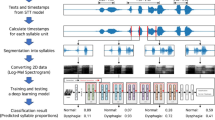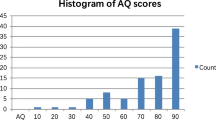Abstract
Head and neck cancer patients often have side effects that make speaking and communicating more difficult. During the speech therapy the approach of perceptual evaluation of voice quality is widely used. First of all, this approach is subjective as it depends on the listener’s perception. Secondly, the approach requires the patient to visit a hospital regularly. The present study is aimed to develop the automatic assessment of pathological speech based on convolutional neural networks to give more objective feedback of the speech quality. The structure of the neural network has been selected based on experimental results. The neural network is trained and validated on the dataset of phonemes which are represented as Mel-frequency cepstral coefficients. The neural network is tested on the syllable dataset. Recognition of the phoneme content of the syllable pronounced by a patient allows to evaluate the progress of the rehabilitation. A conclusion about the applicability of this approach and recommendations for the further improvement of its performance were made.
Access this chapter
Tax calculation will be finalised at checkout
Purchases are for personal use only
Similar content being viewed by others
References
Kaprina, A., Starinskiy, A., Petrova, G.: Malignant neoplasm in Russia in 2017 (morbidity and mortality). PA Hertsen Moscow Oncology Research Center - Branch of FSBI NMRRCof the Ministry of Health of Russia, Moscow (2018)
Nikolaev, A.: Mathematical models and software package for automatic assessment of speech signal quality. Thesis for the degree of candidate of technical sciences in the specialty “Mathematical modeling, numerical methods and program complexes”, Russia, Ekateriburg (2002)
Kostyuchenko, E., Novokhrestova, D., Balatskaya, L.: Evaluation of syllable intelligibility through recognition in speech rehabilitation of cancer patients. In: Schaerf, M., Mecella, M., Igorevna, D.V., Anatolievich, K.I. (eds.) Proceedings of REMS 2018 – Russian Federation & Europe Multidisciplinary Symposium on Computer Science and ICT, Stavropol, Dombay, Russia, 15–20 October 2018
Laaridh, I., Meunier, C., Fredouille, C.: Dysarthric speech evaluation: automatic and perceptual approaches. In: LREC 2018 - 11th International Conference on Language Resources and Evaluation, pp. 1995–2001 (2019)
Kostyuchenko, E., Ignatieva, D., Meshcheryakov, R., Pyatkov, A., Choynzonov, E., Balatskaya, L.: Model of system quality assessment pronouncing phonemes. In: Proceedings of 10th Dynamics of Systems, Mechanisms and Machines (Dynamics) Conference, Omsk, Russia, pp. 1–5 (2016)
Mel-frequency cepstral coefficients (MFCC) and speech recognition. https://habr.com/post/140828/. Accessed 15 Oct 2018
McFee, B., Raffel, C., Liang, D., P.W. Ellis, D., McVicar, M.: librosa: audio and music signal analysis in python. In: Proceedings of 14th Python in Science Conference, pp. 18–24. SciPy, Austin (2015)
Documentation of Keras: The Python Deep Learning library. https://keras.io/. Accessed 12 Nov 2018
Karpov, A.A.: An automatic multimodal speech recognition system with audio and video information. Autom. Rem. Control 75(12), 2190–2200 (2014)
Acknowledgments
The study was performed by a grant from the Russian Science Foundation (project 16-15-00038).
Author information
Authors and Affiliations
Corresponding author
Editor information
Editors and Affiliations
Rights and permissions
Copyright information
© 2019 Springer Nature Switzerland AG
About this paper
Cite this paper
Kostuchenko, E. et al. (2019). Assessment of Syllable Intelligibility Based on Convolutional Neural Networks for Speech Rehabilitation After Speech Organs Surgical Interventions. In: Salah, A., Karpov, A., Potapova, R. (eds) Speech and Computer. SPECOM 2019. Lecture Notes in Computer Science(), vol 11658. Springer, Cham. https://doi.org/10.1007/978-3-030-26061-3_37
Download citation
DOI: https://doi.org/10.1007/978-3-030-26061-3_37
Published:
Publisher Name: Springer, Cham
Print ISBN: 978-3-030-26060-6
Online ISBN: 978-3-030-26061-3
eBook Packages: Computer ScienceComputer Science (R0)




